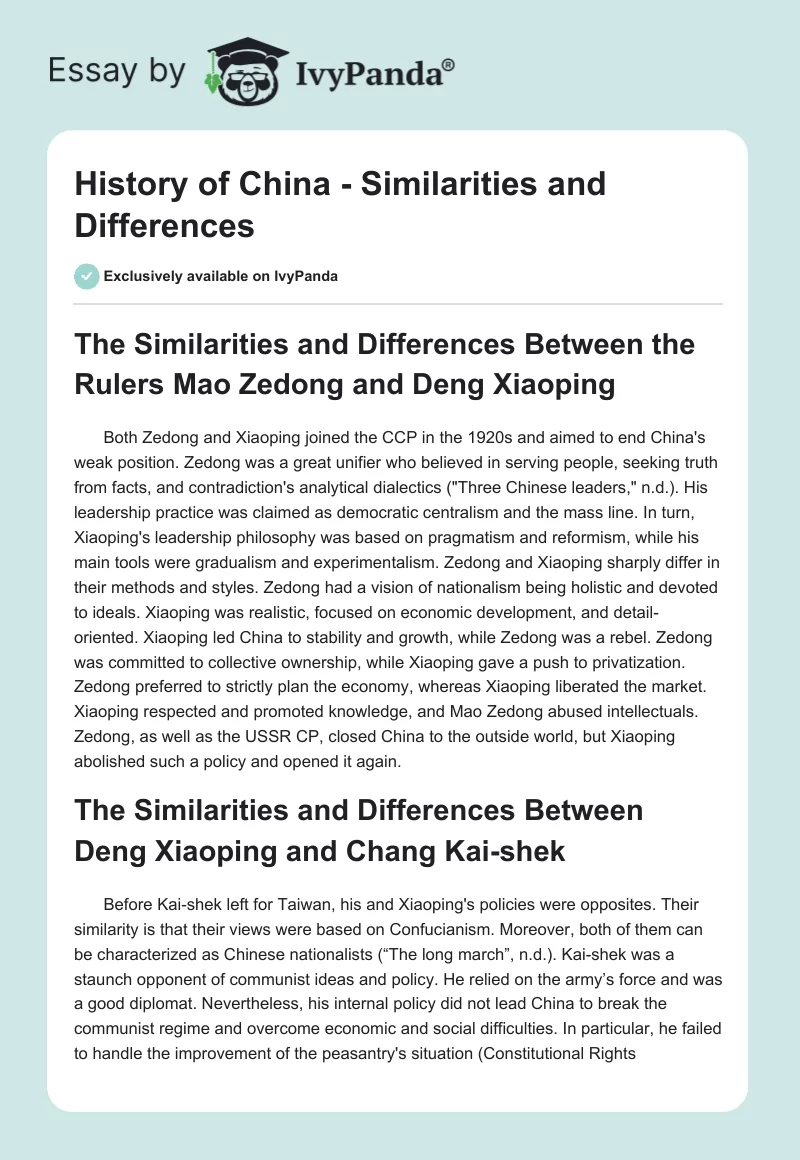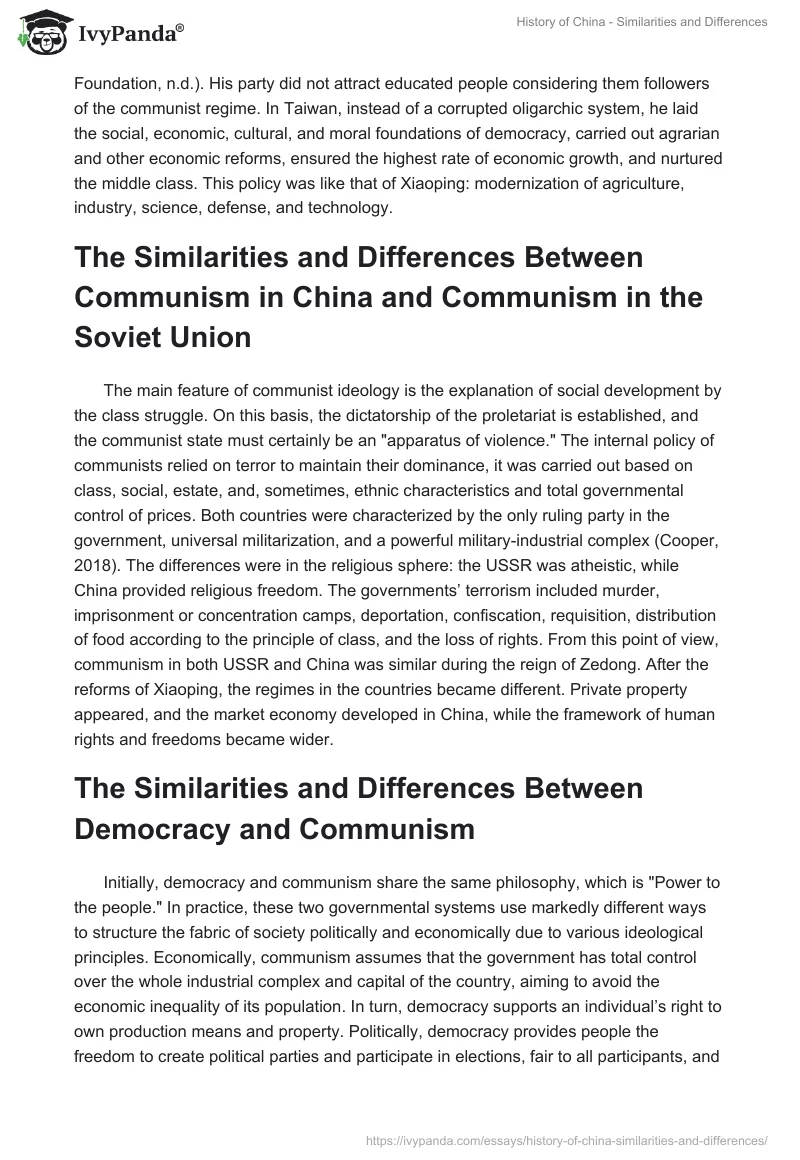The Similarities and Differences Between the Rulers Mao Zedong and Deng Xiaoping
Both Zedong and Xiaoping joined the CCP in the 1920s and aimed to end China’s weak position. Zedong was a great unifier who believed in serving people, seeking truth from facts, and contradiction’s analytical dialectics (“Three Chinese leaders,” n.d.). His leadership practice was claimed as democratic centralism and the mass line. In turn, Xiaoping’s leadership philosophy was based on pragmatism and reformism, while his main tools were gradualism and experimentalism.
Zedong and Xiaoping sharply differ in their methods and styles. Zedong had a vision of nationalism being holistic and devoted to ideals. Xiaoping was realistic, focused on economic development, and detail-oriented. Xiaoping led China to stability and growth, while Zedong was a rebel. Zedong was committed to collective ownership, while Xiaoping gave a push to privatization.
Zedong preferred to strictly plan the economy, whereas Xiaoping liberated the market. Xiaoping respected and promoted knowledge, and Mao Zedong abused intellectuals. Zedong, as well as the USSR CP, closed China to the outside world, but Xiaoping abolished such a policy and opened it again.
The Similarities and Differences Between Deng Xiaoping and Chang Kai-shek
Before Kai-shek left for Taiwan, his and Xiaoping’s policies were opposites. Their similarity is that their views were based on Confucianism. Moreover, both of them can be characterized as Chinese nationalists (“The long march”, n.d.). Kai-shek was a staunch opponent of communist ideas and policy. He relied on the army’s force and was a good diplomat. Nevertheless, his internal policy did not lead China to break the communist regime and overcome economic and social difficulties.
In particular, he failed to handle the improvement of the peasantry’s situation (Constitutional Rights Foundation, n.d.). His party did not attract educated people considering them followers of the communist regime. In Taiwan, instead of a corrupted oligarchic system, he laid the social, economic, cultural, and moral foundations of democracy, carried out agrarian and other economic reforms, ensured the highest rate of economic growth, and nurtured the middle class. This policy was like that of Xiaoping: modernization of agriculture, industry, science, defense, and technology.
The Similarities and Differences Between Communism in China and Communism in the Soviet Union
The main feature of communist ideology is the explanation of social development by the class struggle. On this basis, the dictatorship of the proletariat is established, and the communist state must certainly be an “apparatus of violence.” The internal policy of communists relied on terror to maintain their dominance, it was carried out based on class, social, estate, and, sometimes, ethnic characteristics and total governmental control of prices. Both countries were characterized by the only ruling party in the government, universal militarization, and a powerful military-industrial complex (Cooper, 2018). The differences were in the religious sphere: the USSR was atheistic, while China provided religious freedom.
The governments’ terrorism included murder, imprisonment or concentration camps, deportation, confiscation, requisition, distribution of food according to the principle of class, and the loss of rights. From this point of view, communism in both USSR and China was similar during the reign of Zedong. After the reforms of Xiaoping, the regimes in the countries became different. Private property appeared, and the market economy developed in China, while the framework of human rights and freedoms became wider.
The Similarities and Differences Between Democracy and Communism
Initially, democracy and communism share the same philosophy, which is “Power to the people.” In practice, these two governmental systems use markedly different ways to structure the fabric of society politically and economically due to various ideological principles. Economically, communism assumes that the government has total control over the whole industrial complex and capital of the country, aiming to avoid the economic inequality of its population. In turn, democracy supports an individual’s right to own production means and property. Politically, democracy provides people the freedom to create political parties and participate in elections, fair to all participants, and free of coercion. Communism is characterized by the dominance of one political party and intolerance of political dissents.
References
- Constitutional Rights Foundation. (n.d.). Why did the Communists win the Chinese Revolution? Web.
- Cooper, J. F. (2018). Communist nations’ military assistance. Routledge.
- The long march of the communist party of China 1934-35. (n.d.).
- Three Chinese leaders: Mao Zedong, Zhou Enlai, and Deng Xiaoping. (n.d.). Web.


